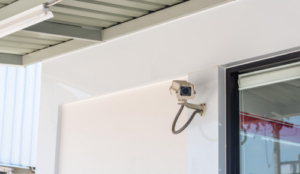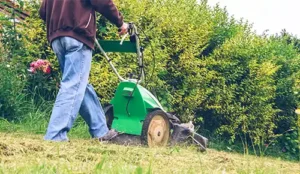As a landlord, it is important that you make your grounds inclusive and accessible for everyone. It’s not just a legal requirement, but a commitment to ensuring that everyone can enjoy your outside spaces, regardless of their age and ability. Inclusive grounds maintenance benefits everyone as it allows tenants to foster a sense of community and support. They provide equal opportunities for individuals with disabilities, the elderly, parents with prams or pushchairs, and others who might face mobility challenges.
In this article, we will run through the accessibility regulations in the UK, provide practical tips to help make your grounds more inclusive, and explore how to ensure continual compliance moving forward.
Accessibility regulations in the UK
While there are no statutory standards that apply to improving access to most outdoor spaces, in the UK, the Equality Act 2010 regulates service providers, employers and educational institutes to ensure that they are making reasonable adjustments to premises, policies and communication methods so that those with disabilities are not at a disadvantage.
In terms of grounds and facilities management, the Equality Act asks that buildings are physically accessible through features such as disabled parking spaces, ramps, lifts and accessible toilets; that they include effective signage, lighting and clear pathways; and that potential barriers are proactively identified and addressed.
On top of the Equality Act, there are three additional advisory standards and approaches, developed by the Sensory Trust, that have been widely adopted by outdoor sites across the UK:
- Outdoor Accessibility Guidance: Paths for All and the Sensory Trust worked together on the Outdoor Accessibility Guidance. It was written for land managers, community trusts and recreation teams to make outdoor spaces in the UK more accessible so that they can be enjoyed by everyone. It provides guidance on how to adopt an inclusive approach as an organisation, how to complete a site review, how to plan and prioritise access improvements and what measures can be taken to ensure comfort and flexibility for users.
- By All Reasonable Means: Developed by the Sensory Trust for Natural England and Natural Resources Wales, the By All Reasonable Means guide contains advice and standards to help managers and owners of green spaces improve the accessibility of their sites, routes and facilities for all visitors.
- Easy Access to Historic Landscapes: In collaboration with Historic England, the Heritage Lottery and the National Trust, the Sensory Trust developed the Easy Access to Historic Landscapes publication to ensure that historic parks, gardens, cemeteries and urban squares can provide easy, dignified access for all visitors.
One of the biggest misconceptions about accessibility regulations and grounds maintenance is that accessibility only refers to wheelchair ramps and parking spaces. While these are essential components, true accessibility includes features for people with visual, auditory, and cognitive impairments, such as tactile paving, audible traffic signals, and clear, simple signage.
Compliance with these regulations is not only a legal requirement, but also a moral imperative. Failing to adhere to the requirements of the Equality Act can result in legal consequences, including fines, as well as reputational damage. By prioritising accessibility and inclusivity, landlords, business owners and organisations can create environments that are welcoming and accessible to all, enhancing their appeal for a diverse range of people.
How to make your grounds more inclusive
If you are concerned that your grounds aren’t accessible enough, there are a number of steps you can take to make your premises more inclusive.
Assess your current grounds
The first step towards an accessible environment is thoroughly assessing your grounds to identify where you are successful, areas that need improvement and any barriers that are preventing these improvements. Put together an accessibility checklist of what you believe needs to be added to your facility.
Accessible pathways and entrances
Once you have an idea of what requires improvement, you can get started on implementing accessible features. One of the most important is ensuring that your entrances are easy to navigate. Installing ramps with appropriate slopes and handrails where necessary, and providing automatic doors can significantly improve accessibility and make sure that people of all abilities can access your facility. Ensure your grounds feature smooth, wide pathways that are free of obstacles, so that those in wheelchairs, with pushchairs or using walking aids can easily navigate their way around.
Inclusive facilities
Address the need for accessible facilities such as disabled toilets and seating areas. Design these areas to cater to diverse needs, including wheelchair accessibility, adequate space and physical aids for manoeuvrability, and designated spots close to entrances for easy access.
Signage
Install clear, easy-to-read signage throughout your grounds. Include braille and tactile elements on signs for visually impaired visitors. Consider an audio map with pre-recorded auditory instructions or tactile maps to assist individuals with visual impairments to independently move around your site.
Sensory considerations
Create sensory-friendly spaces within your grounds, such as quiet areas or calming zones with calming features. Carefully manage any lighting, noise levels and visual clutter to minimise the potential for sensory overload, especially in high-traffic areas.
Train staff and volunteers
Educate any staff and volunteers on how to assist visitors with diverse needs and offer training programmes that can provide practical techniques for giving assistance. Ensure that your team is equipped to address accessibility inquiries effectively.
Regularly reassess and keep on top of grounds maintenance
Encourage visitors with diverse needs to leave feedback about your facility so that you can identify any areas of improvement and quickly address issues. Using this feedback as a guide, ensure that you stay proactive by scheduling regular inspections and maintenance to check for potential hazards and keep on top of any maintenance required.
For example, clearing pathways of leaves and debris is essential, especially in the winter when wet leaves can become slippery to ensure that you create a safe and inclusive environment for all visitors throughout the year.
How Dependable can help
At Dependable, we have over 20 years of experience in maintaining your facilities and grounds to ensure they are accessible for all. We can provide you with a professional team to maintain the outside spaces of your properties year round, preventing overgrown gardens and slippery pathways from creating inaccessible grounds.
Get in touch with us to understand more about how we can help you to improve the accessibility profile of your facility and keep it well maintained throughout the year.




